Japanese Mounjaro recipe. That was the word I kept hearing all over, and I couldn’t help but chuckle. Because I was doing it long before it was cool and long before it went viral as the detox drink of the year.
As a child, I’d sit at the corner of my grandmother’s kitchen table and watch her spoon wild herbs into steaming mugs of what she called mountain sips. She never used fancy labels. It was just good stuff from the earth that made you well at last.
Years later, when the noise of the city made me anxious and worn out, I returned to that little cup. That’s when it occurred to me that the Japanese Mounjaro recipe everyone was buzzing about was something I already knew. It was matcha, ginger, sour plum and kombu. It was warmth. It was balance. It was exactly what I needed to feel human.
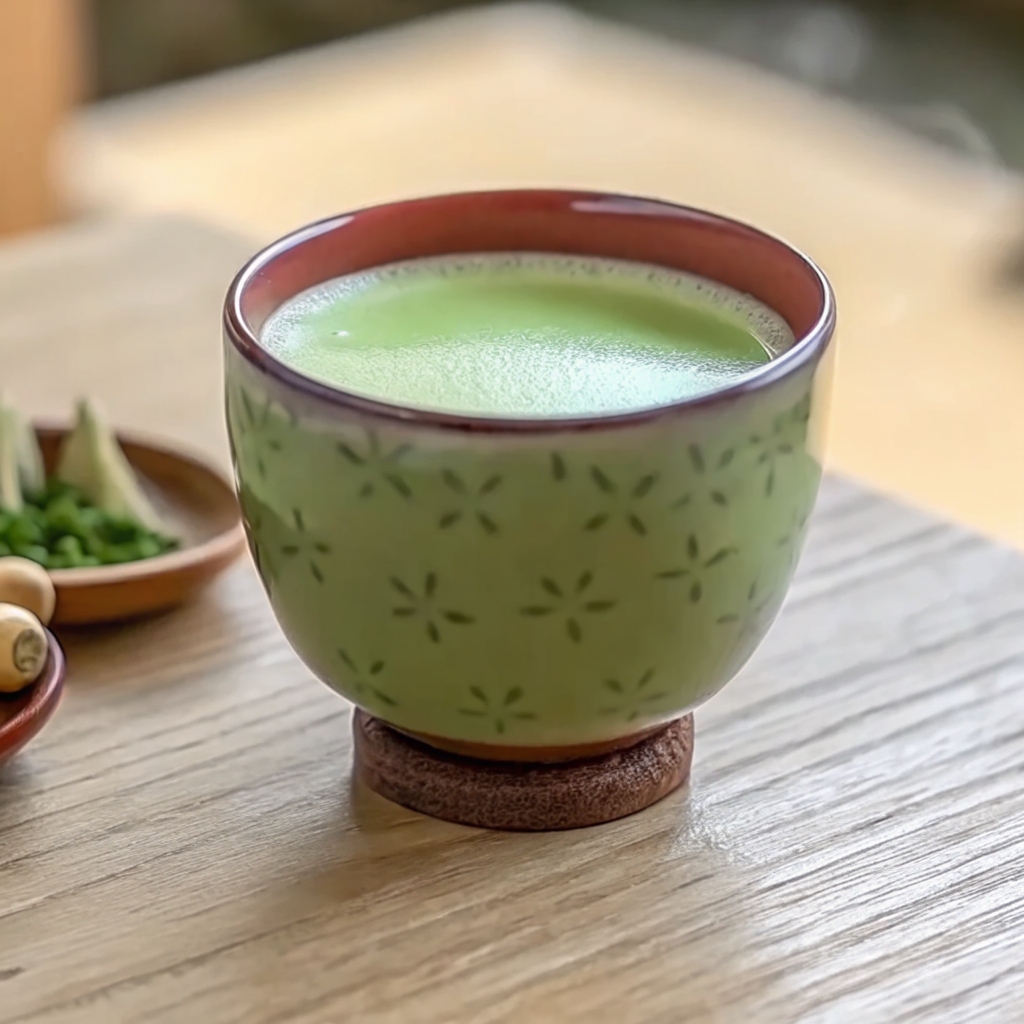
Now I make it with intention and love, just like she did. And I’m here to show you how.
Table of Contents
What is a Japanese Mounjaro Recipe?
So, what is this Japanese Mounjaro thing?
The Japanese Mounjaro recipe isn’t some secret old-school tradition. It’s really a fresh take on a few simple, nourishing ingredients that have been part of Japanese kitchens for generations — matcha, ginger, kombu, and umeboshi plum.
Together, they make a bold little drink that’s sour, savory, and kinda earthy. Definitely not your usual green smoothie. But if you enjoy miso soup or anything with a salty-tangy kick, this might become your new favorite sip.
Why it’s called “Mounjaro”
Here’s the truth — there’s no drink in Japan officially called Mounjaro. Folks started using the name online because it reminded them of a medication that’s tied to energy and weight loss. But this version? It’s completely natural and homemade.
No big claims. Just a comforting recipe that supports your digestion and helps you feel a bit more grounded, one slow sip at a time.
Print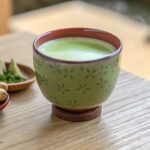
Easy Japanese Mounjaro Recipe
- Total Time: 5 minutes
- Yield: 1 1x
Description
A cozy Japanese-style wellness drink made with matcha, umeboshi plum, fresh ginger, and kombu. Sip it warm or over ice as a savory, slightly sour alternative to traditional tea.
Ingredients
Ingredients
- ½ tsp matcha powder
- 1 small piece dried kombu 2–3 inches
- 1 umeboshi plum pitted
- 2 thin slices fresh ginger
- 1 cup hot water not boiling
- 1 tsp honey or agave optional
Instructions
- In a heat-safe mug or teapot, pour hot water over the kombu and let steep for 5 minutes.
- Remove the kombu and add matcha powder. Whisk until frothy and dissolved.
- Add the ginger slices and gently muddle the umeboshi plum into the drink.
- Let sit for another 2–3 minutes before sipping.
- Optional: Stir in honey or agave to soften the sourness.
Notes
Adjust the intensity of the umeboshi by starting with half a plum.
Drink warm or chill over ice for a refreshing version.
Not suitable for people with iodine sensitivity or those avoiding caffeine.
- Prep Time: 5 min
- Category: Drink
- Method: Mixing
- Cuisine: Japanesse
Nutrition
- Serving Size: 1
Keywords: Matcha powder, umeboshi paste, lemon juice, fresh ginger,
Also read: What’s in the 4-ingredient Mounjaro recipe everyone’s talking about?
Key Ingredients in a Traditional Japanese Mounjaro
What’s in it?
The Japanese Mounjaro recipe only needs a handful of ingredients, but each one brings something special to the mix. These aren’t trendy health foods. They’re just real, time-tested plants that work with your body, not against it.
Here’s what you’ll need:
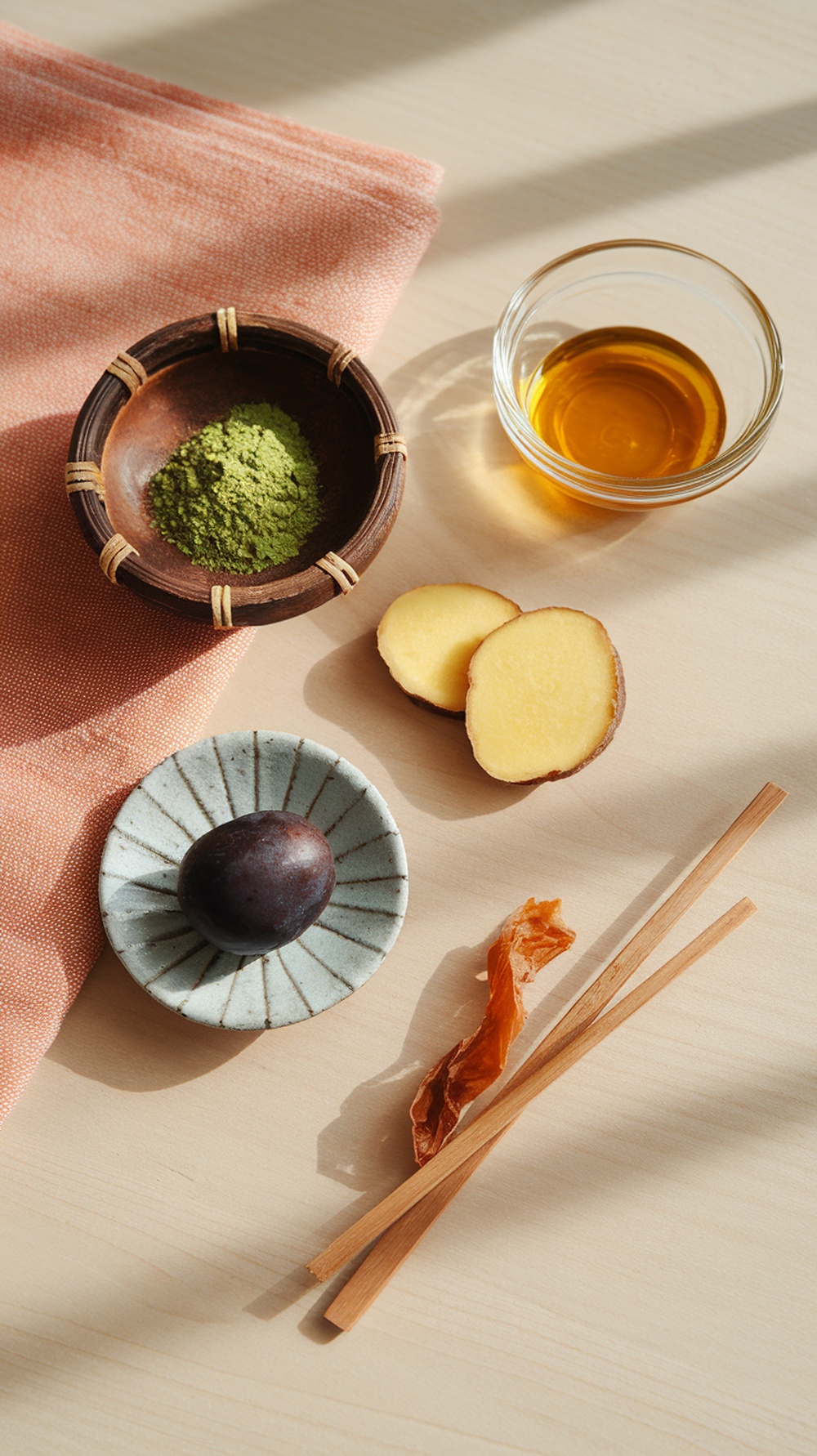
Matcha
This is green tea in its most concentrated form. It gives the drink its rich color and smooth energy. No jittery crash, just a clean, focused kind of boost.
Umeboshi Plum
A little salty, a little sour, and packed with natural goodness. Umeboshi is known for helping with digestion and calming the stomach. I like to mash it right into the cup.
Ginger
Warm and spicy in the best way. Ginger brings heat and healing. If your belly’s feeling off or your body’s a bit sluggish, this is the root that helps reset everything.
Kombu
This is an edible seaweed. Sounds weird, I know, but it gives the drink a deep, savory flavor and a healthy dose of iodine. It’s kind of the secret behind that “wow, this is actually good” moment.
Optional sweetener
You can add a touch of honey or agave if the flavor feels too strong at first. I like mine as-is, but go with what feels right for you.
How to Make Japanese Mounjaro at Home
Simple steps, real ingredients
Making the Japanese Mounjaro recipe at home is super easy. No special tools, no stress. Just a few grounding ingredients and a quiet moment in your kitchen. This natural Mounjaro drink has become one of my go-tos when I need to reset without overthinking it.
What you’ll need:
- ½ teaspoon matcha powder
- 1 small piece of dried kombu (about 2 to 3 inches)
- 1 umeboshi plum (pitted)
- 2 thin slices of fresh ginger
- 1 cup hot water (not boiling)
- Optional: 1 teaspoon honey or agave
Kitchen tools:
- A heat-safe mug or teacup
- A spoon or small whisk
- A small bowl for soaking the kombu
- A grater for the ginger (if you want a stronger flavor)
- A teaspoon (or just eyeball it — no pressure)
How to make it
- Place the kombu in your mug and pour in the hot water. Let it soak for about 5 minutes.
- Remove the kombu, then whisk in your matcha until smooth.
- Add the ginger slices.
- Gently press the umeboshi plum into the drink with your spoon so it breaks apart.
- Let it sit another 2 to 3 minutes.
- If you like, stir in a bit of honey or agave to soften the flavor.
This homemade Mounjaro is savory, sour, earthy, and calming all at once. It’s not your average wellness drink, and that’s exactly the point.
A few personal notes
I usually drink the Japanese Mounjaro recipe warm, especially when I’m feeling off or need something to help me slow down. But on hot days, I chill it over ice and sip it slowly in the sunshine.
Start with half a plum if you’re new to the taste. And if you have any sensitivities to caffeine or iodine, just be mindful or talk with someone who knows your body well.
This is my go-to natural Mounjaro drink when I want something simple that still feels like it’s doing good things inside.
Nutrition Info (Per 1 serving)
| Nutrient | Amount |
|---|---|
| Calories | 25 kcal |
| Total Fat | 0 g |
| Sodium | 300 mg |
| Total Carbs | 5 g |
| Sugars (from honey)* | 4 g (optional) |
| Protein | 0 g |
| Caffeine (from matcha) | ~25 mg |
| Iodine (from kombu)** | Trace |
*Only if honey or agave is added
**Skip kombu if you’re avoiding iodineHealth Benefits of Natural Mounjaro
What this little drink can really do
The Japanese Mounjaro recipe has been a steady part of my wellness routine — not because it promises big, flashy results, but because it delivers quiet, lasting support. This natural Mounjaro drink is about grounding yourself in real nourishment and slowing down just enough to listen to what your body’s asking for.
Here’s why I keep coming back to it:
Gentle on digestion
The ingredients in the Japanese Mounjaro recipe work like a little team. Ginger soothes, umeboshi plum helps move things along, and kombu offers a light mineral boost. This combo makes the drink a great companion after a big meal or on those sluggish belly days.
Clean energy without the crash
Thanks to the matcha, this Japanese Mounjaro detox drink gives a gentle lift. It’s just enough to help me focus without leaving me wired. The L-theanine in matcha keeps everything smooth — no spikes, no drops.
Soothing and hydrating
The warm water and natural sea minerals in kombu make this more than just a tea. It hydrates in a way that feels nourishing, not overwhelming. It’s especially lovely first thing in the morning or during an afternoon slump.
Real ingredients, real benefits
This homemade Mounjaro is made from whole, traditional ingredients — no powders, no preservatives. It’s one of those recipes that brings you back to basics, in the best way.
What it won’t do
Let’s keep things honest. The Japanese Mounjaro recipe is not a miracle cure. It won’t detox your body in the way some ads suggest (that’s what your liver’s for). It won’t replace medicine, and it won’t magically shed weight overnight.
But here’s what it can do:
It can help you feel lighter. More centered. Less puffy. More in control of your energy. And sometimes, that’s all we really need.
It’s a small habit with a big heart.
Brazilian Mounjaro vs Japanese Mounjaro Recipe
Not the same sip
You’ve probably seen both the Japanese Mounjaro recipe and the Brazilian version floating around online. Same name, totally different drinks. If you’re wondering what sets them apart, this section breaks it down in a way that’s easy to follow.
The Brazilian Mounjaro is bold and quick-hitting. It uses sharp, fiery ingredients and is usually taken as a morning metabolism booster.
The Japanese Mounjaro recipe is the opposite. It’s slower, more soothing, and built to nourish your gut and give you calm, clean energy.
Side-by-side comparison
| Feature | Japanese Mounjaro Recipe | Brazilian Mounjaro |
|---|---|---|
| Flavor | Earthy, savory, slightly sour | Tangy, spicy, citrusy |
| Main Purpose | Gut support, hydration, calm energy | Metabolism boost, appetite control |
| Base Ingredients | Matcha, kombu, umeboshi plum, ginger | Lemon, cayenne, ginger, apple cider vinegar |
| Sweetener | Optional (honey or agave) | Usually none or very minimal |
| Caffeine | Yes (from matcha) | No |
| Iodine | Trace amount (from kombu) | None |
| Tradition Inspired | Japanese wellness and home remedies | South American-style detox blends |
| Best Time to Drink | Mid-morning or early evening | Morning on an empty stomach |
| Taste Level | Mild and comforting | Strong and sharp |
Nutrition basics (per serving)
| Nutrient | Japanese Mounjaro | Brazilian Mounjaro |
|---|---|---|
| Calories | 25 kcal | 10 to 15 kcal |
| Total Fat | 0 g | 0 g |
| Sodium | Around 300 mg | Less than 10 mg |
| Carbohydrates | About 5 g | Around 3 g |
| Sugar | 4 g if sweetened | 0 to 1 g |
| Caffeine | Around 25 mg | 0 mg |
| Iodine | Trace from kombu | None |
So which one’s for you
If you’re into bold, spicy flavors and want a kick to start your day, Brazilian Mounjaro could be your thing. But if you’re looking for something that feels more like a gentle ritual than a jolt, the Japanese Mounjaro recipe might be the better fit.
It’s not about better or worse. It’s about what your body is asking for. Some days you want fire. Other days, you want grounding. This drink gives you that option.
Common Mistakes When Cooking Mounjaro
Little things that can throw it off
The Japanese Mounjaro recipe is simple, but like any good home remedy, the details matter. Over the years, I’ve made every mistake in the book. Nothing serious, just little things that made the drink taste off or not work the way it should. So here’s a quick list of easy things to avoid.
Using boiling water
This is probably the most common one. Boiling water can make the matcha taste bitter and also pull too much sharpness from the kombu. Use hot water that’s just shy of boiling. If it’s too hot to touch but not bubbling, you’re good.
Skipping the soa
Letting the kombu soak for a few minutes before adding the rest is part of the magic. It softens the seaweed and pulls out those deep minerals and umami flavor. If you rush it, you lose that savory layer the Japanese Mounjaro Recipe is known for.
Not mashing the plum
Umeboshi plum is intense, but it’s not meant to sit whole in the bottom of your cup. Gently press or mash it so it blends into the drink. That’s how you get the full sour-salty effect. Skipping this step leaves you with a bland sip and a surprise burst at the end.
Using too much matcha
A little goes a long way. Matcha should support the flavor, not overpower it. Too much can make the drink taste chalky or give you a caffeine buzz that defeats the calming point of the natural Japanese Mounjaro recipe.
Over-sweetening
Adding honey or agave is totally fine, especially if you’re easing into the taste. But too much can mask the whole reason this drink works. Keep it light so your body still gets the message from the plants, not just the sugar.
Forgetting to listen to your body
This one’s not about taste. It’s about mindfulness. The homemade Japanese Mounjaro recipe isn’t a quick fix. It’s a slow, nourishing practice. Sip it when you need grounding, and skip it when your body says no. That’s real wellness.
Storing and Serving Japanese Mounjaro
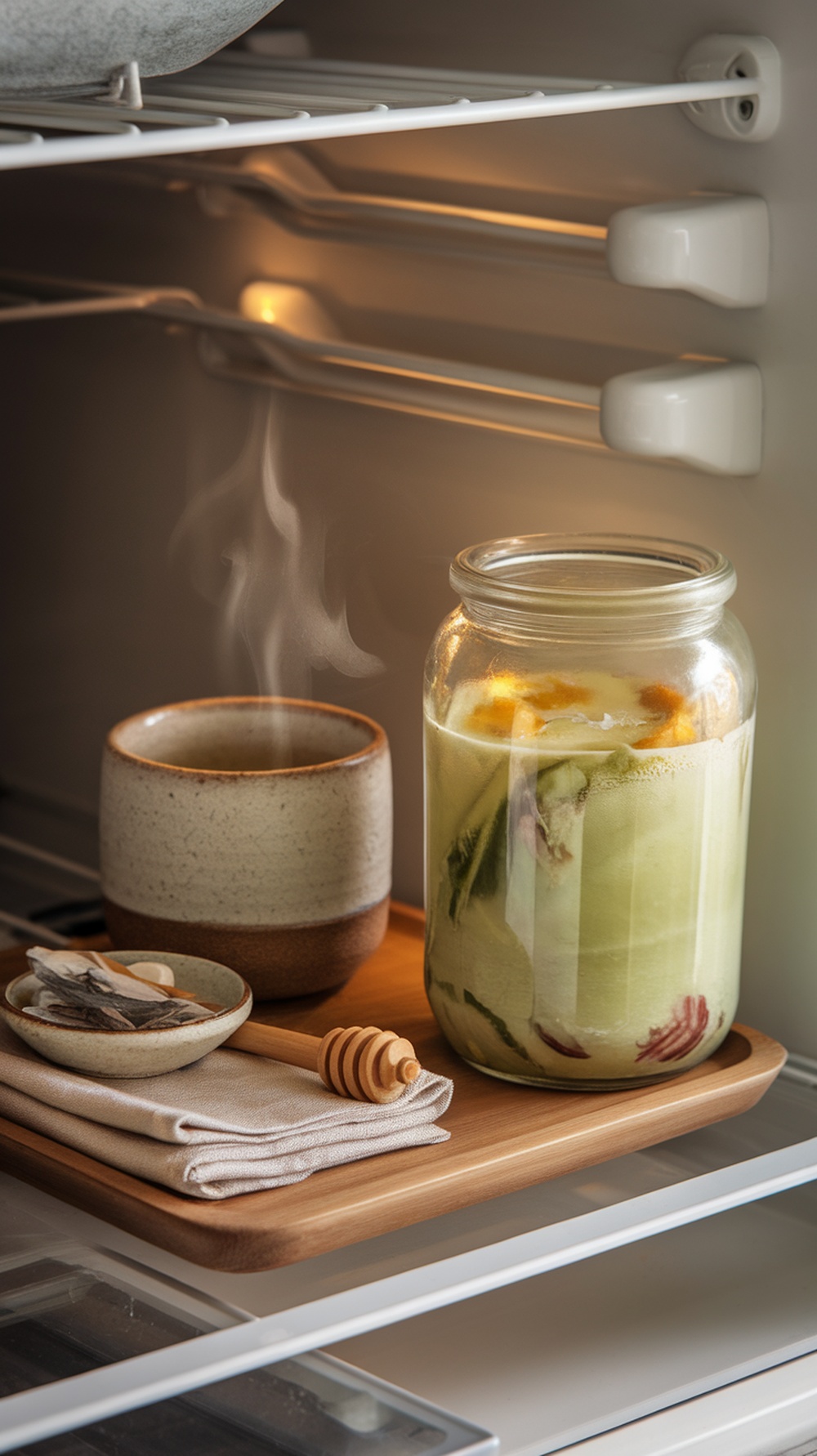
Keep your Japanese Mounjaro recipe fresh and functional
The Japanese Mounjaro recipe is best when it’s made fresh, but I get it. Life doesn’t always stick to your routine. Luckily, this drink is easy to store and still tastes great later. Whether you’re prepping in advance or saving leftovers, the Japanese Mounjaro recipe is flexible enough to work around your day.
How to store the Japanese Mounjaro recipe
Once your homemade Mounjaro recipe is brewed, strain out the kombu, ginger, and plum pieces, then pour the liquid into a clean glass jar or bottle. Store it in the fridge for up to 36 hours.
If you’re drinking it cold later, give it a quick stir or shake before serving. If you prefer it warm, reheat gently on the stove or in the microwave — but don’t boil. Keeping the heat low helps preserve the nutrients and original flavor of your Japanese Mounjaro recipe This is backed by research from the Medical News Today.
Flavors deepen slightly after resting, which some folks actually prefer. Especially if you’re new to the sour punch of umeboshi, letting the drink sit can make the Japanese Mounjaro detox experience more mellow.
Avoid adding sweeteners until you’re ready to drink. Honey or agave can shift in taste when stored too long.
How to serve your Japanese Mounjaro recipe
There’s no wrong way to enjoy your Japanese Mounjaro recipe. It can be as simple or as special as you want. The key is making it feel like a little moment of care, not just another health trend.
Warm and grounding
This is my personal favorite way to drink the Japanese Mounjaro recipe. Sip it warm and slow in a cozy mug. It’s calming and pairs perfectly with quiet mornings or gentle evenings.
Over ice
Let it cool down, pour over ice, and add a slice of lemon or cucumber. This chilled version of the Japanese Mounjaro recipe is clean, crisp, and great for warmer days.
Shared in a tea pot
Serving the Japanese Mounjaro recipe in a small teapot makes it feel like a wellness ritual. Whether it’s just for you or with someone else, it turns an ordinary sip into something meaningful.
With a light snack
Pair your natural Mounjaro drink with a rice cracker, sliced apple, or a few almonds. Nothing heavy — just something to keep it balanced and gentle on your system.
Let it be part of your rhythm
The Japanese Mounjaro recipe isn’t just something you drink. It’s a pause. A reminder to care for yourself in small, consistent ways. Whether you enjoy it once a week or every day, it’s a beautiful habit to build around calm, not control.
Warm or iced. Dressed up or simple. Your Japanese Mounjaro recipe is whatever you need it to be.
Also read: The Natural Version of Mounjaro Recipe
Follow along for more natural recipes and wellness inspiration:
- 🌿 Pinterest – Explore clean, earthy recipes and detox ideas
- 🍵 Facebook – Join the community for daily Mounjaro tips and recipe posts
Frequently Asked Questions
1. How do you make Japanese Mounjaro?
To make the Japanese Mounjaro recipe, you combine hot water with matcha powder, dried kombu (a type of seaweed), fresh ginger slices, and one umeboshi plum. Let the kombu soak, whisk in the matcha, and mash the plum into the drink. Some people like to add a little honey or agave to balance out the sourness. You can enjoy it warm or chilled over ice.
2. Does natural Mounjaro work?
The natural Mounjaro drink isn’t a miracle cure, but it absolutely offers benefits when used consistently. It supports digestion, helps reduce bloating, and gives you a calm kind of energy thanks to the matcha. It’s not meant to replace anything medical, but it’s a gentle way to help your body feel more balanced.
4. What is the Brazilian Mounjaro?
The Brazilian Mounjaro is a totally different kind of drink. It usually includes lemon juice, apple cider vinegar, cayenne pepper, and sometimes turmeric. It’s spicier and made to wake you up quickly. The Japanese Mounjaro recipe is more about long-term wellness, digestion, and calm focus.
5. Can I drink Japanese Mounjaro every day?
Yes, the Japanese Mounjaro recipe can be a daily part of your wellness routine. I sip it mid-morning or early evening, especially when I want to feel grounded. Just keep in mind it does contain a little caffeine from matcha and iodine from kombu, so listen to your body and adjust as needed.
6. Is the Japanese Mounjaro recipe safe for everyone?
Most people can enjoy the Japanese Mounjaro recipe safely, but if you’re pregnant, breastfeeding, or have thyroid conditions or caffeine sensitivity, it’s best to talk to your healthcare provider first. Like any herbal-style drink, it’s always smart to check in with what your body needs.
Personal and Family Results from the Japanese Mounjaro Recipe
| Name | Duration Using Recipe | Weight Change | Noticed Benefits | How They Drink It |
|---|---|---|---|---|
| Olivia (me) | 30 days | –5 lbs | Reduced bloating, better focus, less snacking | Warm, mid-morning daily |
| Aunt Marie | 3 weeks | –4 lbs | Less heaviness after meals, improved digestion | Evening, warm after dinner |
| Tasha (friend) | 4 weeks | –6 lbs | More energy, fewer cravings, smoother digestion | Iced, early afternoon at work |
| Evan (brother) | 2 weeks | –3 lbs | Clearer mind, less bloating, improved regularity | Iced, stored in fridge |
🔍 Notes:
- All results are natural, with no diet changes beyond drinking the Japanese Mounjaro recipe.
- Weight loss was not the main goal — most noticed gut relief and mental clarity first.
- Everyone used real ingredients: matcha, umeboshi plum, ginger, kombu, and optional honey.
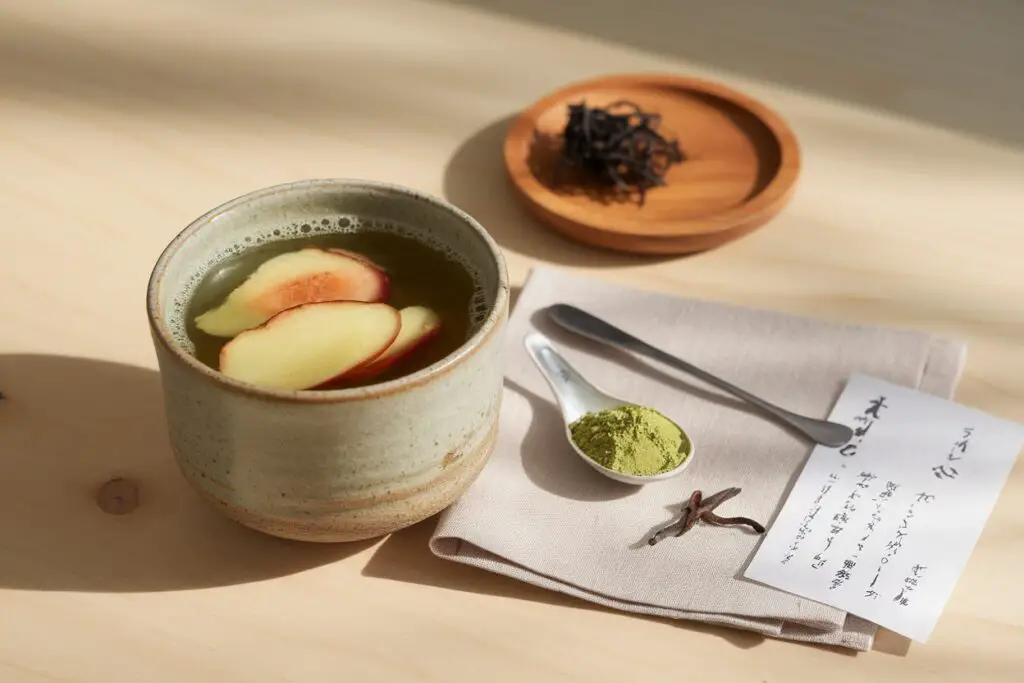
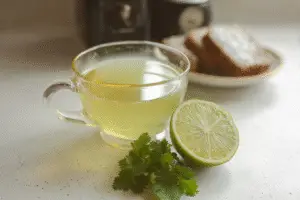


8 thoughts on “Japanese Mounjaro Recipe – The Ultimate Fusion for Health & Flavor”